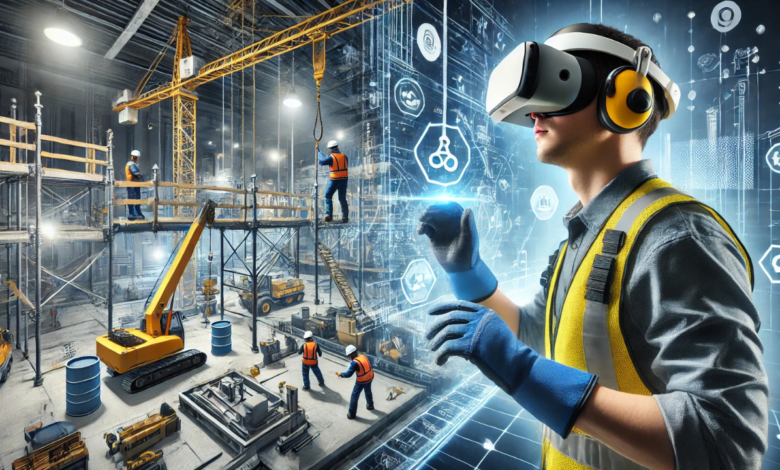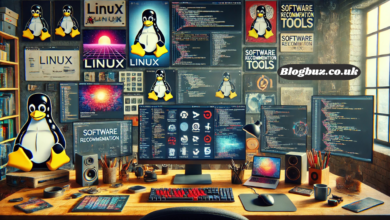Exploring the Benefits of Virtual Reality in Construction Training

Virtual Reality VR was no longer just an engineering for gaming or entertainment; it had entered single industries, including construction. In recent years, VR has constituted a game-changing tool for building training, offering a safer, more efficient, and immersible way to grow workers. In this blog, we’ll explore the benefits of using VR in building training and why Construction Estimator is quickly becoming a vital resource in the industry.
Enhanced Safety Training
Construction sites are full of effectiveness hazards, from working at soaring to handling heavy machinery. One of the excellent advantages of VR in building training is its power to adopt these risks in a safe and controlled environment. Workers could learn to deal with grievous situations without exposure to real dangers.
How VR Improves Safety Training:
- Realistic Scenarios: VR allows trainees to work in grievous conditions such as high scaffolding or near heavy equipment, giving them active work without real-world risks.
- Mistake-Friendly Environment: Trainees could make mistakes and learn from them without consequences, helping them learn recourse protocols better.
- Emergency Response Practice: VR could adapt to emergencies like fires or sat malfunctions, helping workers learn how to reply quickly and expeditiously in such situations.
By using VR, building companies could declare accidents on the job site, ensuring their workers are meticulously prepared for real-world scenarios.
Cost-Effective Training Solutions
Training workers can be expensive, particularly when it involves using real equipment, materials, and instructors. VR offers a more cost-efficient result by providing immersive training experiences without needing real tools or resources.
Cost Benefits of VR Training:
- Reduced Material Costs: Traditional training often requires materials that can be expensive and time-consuming to set up. With VR, all that is needed is the equipment, and the scenarios can be used repeatedly.
- No Equipment Wear and Tear: In a VR setting, there is no wear and tear on real machinery, reducing the costs associated with tending and remediability during training.
- Scalable Training: VR training can be gently scaled up or down to hold a varying reckon of trainees. You could train one single or a whole team without the need for additive resources.
As a semi-permanent investment, VR could help companies save on training costs while still providing high-quality education.
Faster Onboarding for New Employees
Onboarding new employees in the building manufacture could take time and be peculiar when it involves active training with tools and equipment. VR accelerates this ferment by allowing new hires to quickly acquaint themselves with the job site and learn the demand skills in a realistic setting.
Benefits for New Employees:
Quicker Adaptation: New workers could hunt the building site in VR before ever stepping foot on it. This gives Freelance CAD Drafter an understanding of the work environs and the tasks they’ll be performing.
- Immediate Hands-On Experience: Instead of waiting for a supervisor to show them around, new employees can start practicing tasks straightaway and learn how to use sat in a safe and controlled environment.
- Confidence Building: By getting broadened with the job finished VR, new hires gain a pledge of their abilities before starting real work. This could lead to improved execution and a sander passing onto the job site.
Faster onboarding saves time and ensures that new employees are adequately prepared, reducing the risk of mistakes or accidents.
Remote Training Capabilities
With the increasing regard for far solutions as well, VR has constituted the right tool for training workers who cannot be physically accoladed at a job site. Whether it’s due to geographic blank or wellness concerns, VR offers a way to train employees without requiring them to travel.
Remote Learning Benefits:
- Training from Anywhere: Workers can approach VR training from any place in the world, making it easier for building companies to train employees at aggregated locations. Collaboration Across Teams: VR allows teams from clear-cut locations to work unitedly in the same realistic environment, improving communication and teamwork.
- Health and Safety Compliance: In situations like an epidemic or other wellness crises, VR provides a safe secondary to personalized training, allowing companies to keep educating their workers without compromising their safety.
By offering far training, VR ensures that workers can keep growing their skills even when they cannot be physically accoladed on the job site.
Real-Time Performance Feedback
One of the key benefits of VR in building training is the power to allow period feedback. Traditional training methods might have taken time for evaluation, but VR systems could straightaway work a trainee is executing and allow suggestions for improvement.
Real-Time Feedback Benefits:
- Immediate Corrections: If a doer makes a fault during training,’ VR could offer prompt feedback, allowing them to conform the issue on the spot.
- Customized Learning: VR systems could reduce the training to the appropriate needs of the trainee, focusing on areas where they need improvement.
- Progress Tracking: VR could track the advance of trainees over time, providing insights into their skill growth and helping instructors accommodate the training accordingly.
Offering period-executing feedback and VR helps workers improve their skills quicker and ensures that they are well-prepared for the job site.
Environmental Benefits
In addition to its hard-skilled benefits, VR could also convey more environmentally informal building training practices. Traditional training often involves the use of materials, machinery, and fuel, all of which have a biological impact. VR eliminates the need for real resources, reducing the manufacturer’s adamant footprint.
Environmental Impact of VR:
- Reduced Waste: Because VR eliminates the need for real materials, less waste is produced during training.
- Lower Energy Consumption: VR training does not need the appendage of heavy machinery or tools, which reduces vigor use and emissions.
- Sustainable Training Practices: By adopting VR, building companies could elevate more property practices while still providing high-quality training.
As sustainability becomes a growing trend in construction, VR offers a way to train workers in Construction Estimating Services in a more eco-friendly manner.
Conclusion
Virtual reality is transforming building manufacturing by offering innovations and efficacious training solutions. From enhancing recourse, improving skill storage, reducing costs, and providing period feedback, VR has constituted a quantitative tool in training building workers. As engineering evolves, we anticipate VR will play an even larger role in preparing the next extension of building professionals for the challenges ahead.




